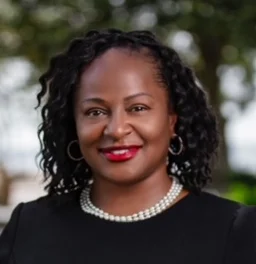The IACP session “From Evidence to Action: How Science Can Improve Police Effectiveness” was moderated by Tamara Herold from U.S. Department of Justice, National Institute of Justice (NIJ). Speakers included Henry Wang from the New York City Police Department, Tarrick McGuire from the Arlington Police Department, and Cecilia Ashe from the Milford Police Department.
Today, there are significant challenges in recruiting and hiring police officers, unlike in past years when there was a heightened interest in policing as a profession. Police departments are forced to protect their communities with fewer resources. Hence, agencies must leverage technology, intelligence, and science to effectively solve crimes and allocate their resources. Statistical data is relevant to identify crime trends, while research may shed light on the reasons that crimes are committed in an area, or the probability of certain types of crimes occurring in an area. Social scientists and police organizations must work collaboratively to ascertain causation, which may include environmental influences. It is helpful when law enforcement is more transparent in allowing researchers to access information and crime data. It is recognized that intelligence-led policing helps police leaders to allocate resources in a deliberate manner, supported by facts.
Here at SoundThinking, we are constantly in pursuit of enhancing our technology platform. The ShotSpotter technology is a known game changer when it comes to gunshot detection and enhancing police response with scientific precision on the location of an illegal discharge of firearms. The ShotSpotter technology filled a gap as the research established that approximately 80 percent of gunshots are not called to the police. Consequently, gunshot detection technology has resulted in more effective police response, ultimately leading to enhanced public safety and better relationships between police and the community.




